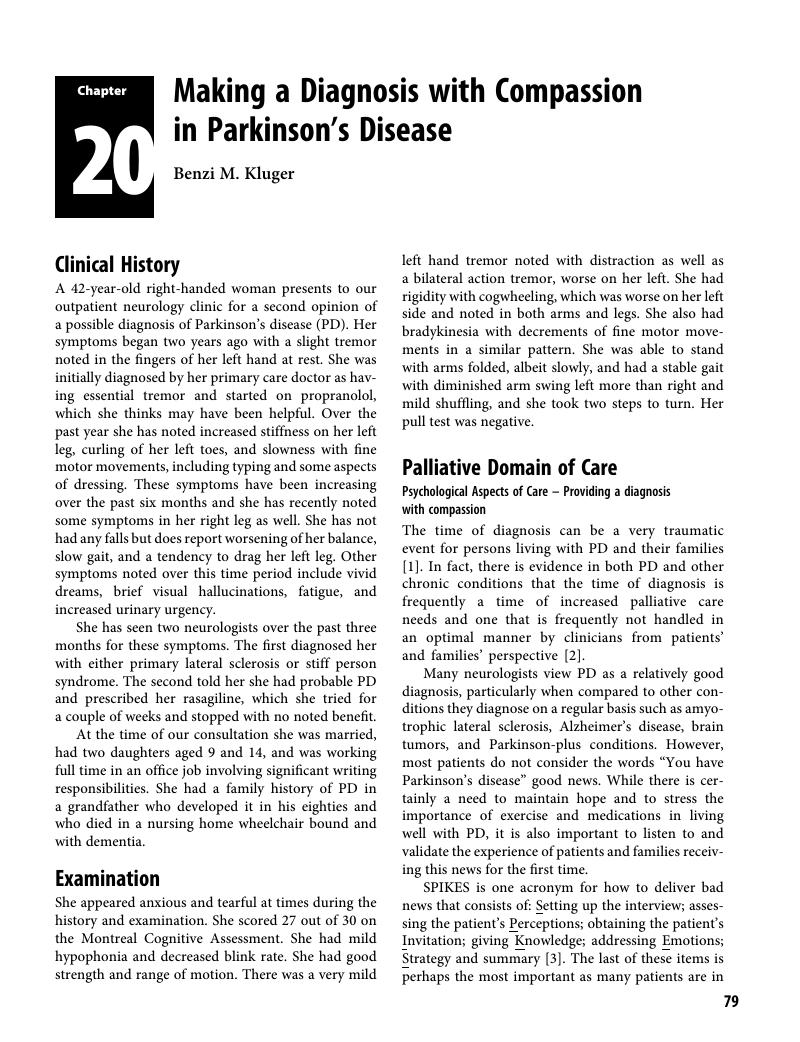Book contents
- Case Studies in Neuropalliative Care
- Case Studies in Neuropalliative Care
- Copyright page
- Contents
- Contributors
- Section 1 Palliative Care Principles
- Section 2 Cerebrovascular Diseases
- Section 3 Neurodegenerative and Neuromuscular Diseases
- Chapter 20 Making a Diagnosis with Compassion in Parkinson’s Disease
- Chapter 21 Caring for Patients and Families Affected by Advanced Parkinson’s Disease
- Chapter 22 Cognitive Decline in Parkinson Disease
- Chapter 23 Evolving Goals of Care as Progressive Supranuclear Palsy Progresses
- Chapter 24 Psychosis and Caregiver Strain in Parkinson Disease
- Chapter 25 Constipation and Parkinson Disease
- Chapter 26 Keeping Mom Home at the End of Life
- Chapter 27 “I Miss Him Already”
- Chapter 28 The Dynamic Role of Palliative Medicine throughout the Course of Neuromuscular Disease
- Chapter 29 Considerations for Noninvasive Ventilation in Neuromuscular Disease
- Chapter 30 Optimizing Symptoms before a Compassionate Wean from the Ventilator
- Chapter 31 The Case of a Lost Patch
- Chapter 32 Dementia, Delirium, and a Distended Bladder
- Section 4 Neuro-oncology
- Section 5 Pediatric Neurology
- Section 6 Demyelinating Diseases and Autoimmune Neurology
- Index
- References
Chapter 20 - Making a Diagnosis with Compassion in Parkinson’s Disease
from Section 3 - Neurodegenerative and Neuromuscular Diseases
Published online by Cambridge University Press: 08 June 2018
- Case Studies in Neuropalliative Care
- Case Studies in Neuropalliative Care
- Copyright page
- Contents
- Contributors
- Section 1 Palliative Care Principles
- Section 2 Cerebrovascular Diseases
- Section 3 Neurodegenerative and Neuromuscular Diseases
- Chapter 20 Making a Diagnosis with Compassion in Parkinson’s Disease
- Chapter 21 Caring for Patients and Families Affected by Advanced Parkinson’s Disease
- Chapter 22 Cognitive Decline in Parkinson Disease
- Chapter 23 Evolving Goals of Care as Progressive Supranuclear Palsy Progresses
- Chapter 24 Psychosis and Caregiver Strain in Parkinson Disease
- Chapter 25 Constipation and Parkinson Disease
- Chapter 26 Keeping Mom Home at the End of Life
- Chapter 27 “I Miss Him Already”
- Chapter 28 The Dynamic Role of Palliative Medicine throughout the Course of Neuromuscular Disease
- Chapter 29 Considerations for Noninvasive Ventilation in Neuromuscular Disease
- Chapter 30 Optimizing Symptoms before a Compassionate Wean from the Ventilator
- Chapter 31 The Case of a Lost Patch
- Chapter 32 Dementia, Delirium, and a Distended Bladder
- Section 4 Neuro-oncology
- Section 5 Pediatric Neurology
- Section 6 Demyelinating Diseases and Autoimmune Neurology
- Index
- References
Summary

- Type
- Chapter
- Information
- Case Studies in Neuropalliative Care , pp. 79 - 81Publisher: Cambridge University PressPrint publication year: 2018



